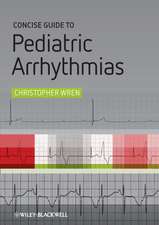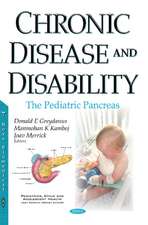Pediatric Diabetic Ketoacidosis: Risk Factors & Pathophysiology, Management Strategies & Outcomes
Editat de Stephen C Duck, Joseph R Hagemanen Limba Engleză Hardback – sep 2015
Preț: 1045.20 lei
Preț vechi: 1215.30 lei
-14% Nou
Puncte Express: 1568
Preț estimativ în valută:
199.99€ • 208.81$ • 165.52£
199.99€ • 208.81$ • 165.52£
Carte disponibilă
Livrare economică 14-28 martie
Preluare comenzi: 021 569.72.76
Specificații
ISBN-13: 9781634832205
ISBN-10: 1634832205
Pagini: 80
Dimensiuni: 155 x 230 x 14 mm
Greutate: 0.36 kg
Editura: Nova Science Publishers Inc
Colecția Nova Science Publishers Inc
ISBN-10: 1634832205
Pagini: 80
Dimensiuni: 155 x 230 x 14 mm
Greutate: 0.36 kg
Editura: Nova Science Publishers Inc
Colecția Nova Science Publishers Inc
Cuprins
Preface; Risk Factors & Pathophysiology of Diabetic Ketoacidosis in Children; Diabetic Ketoacidosis in Infants & Young Children; Ketosis-Prone Type 2 diabetes Mellitus in Children & Adolescents; Management of Pediatric Diabetic Ketoacidosis in the Emergency Department; In-Hospital Management of Pediatric Diabetic Ketoacidosis (DKA): Presentation, Diagnosis, & Treatment; Complications & Outcomes of Pediatric Diabetic Ketoacidosis; Pediatric Hyperglycemic Hyperosmolar State; Index.












